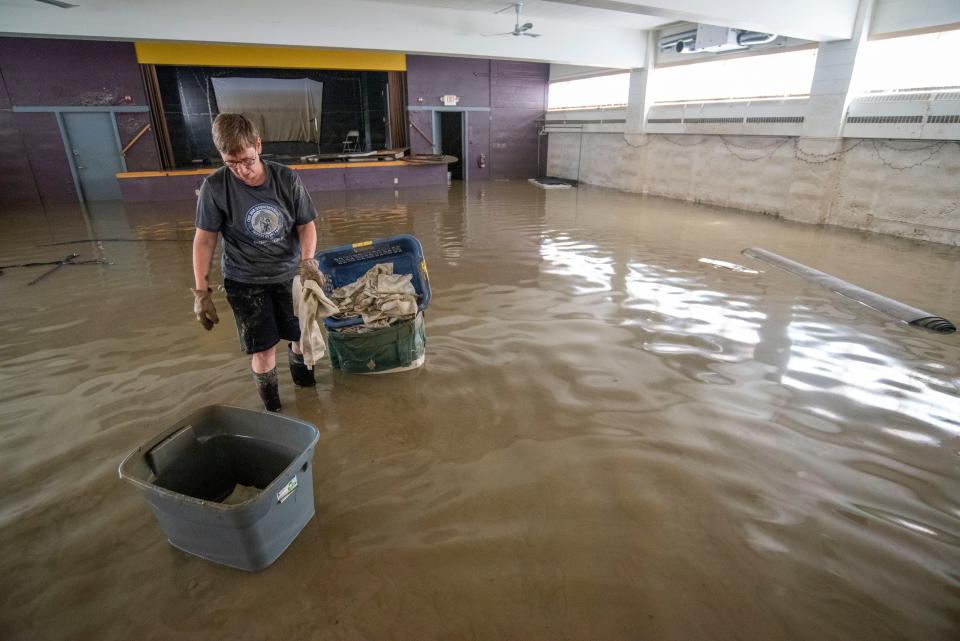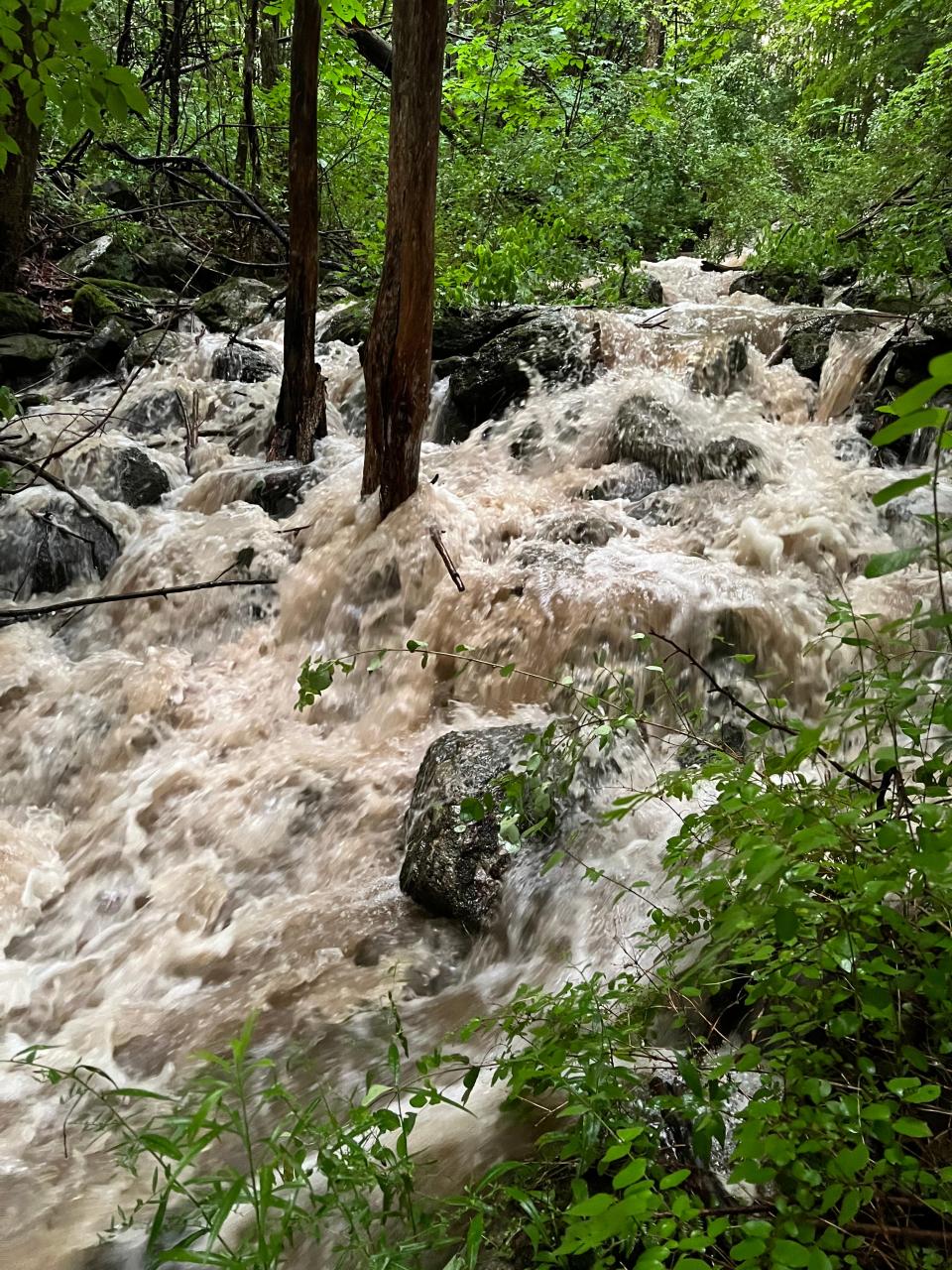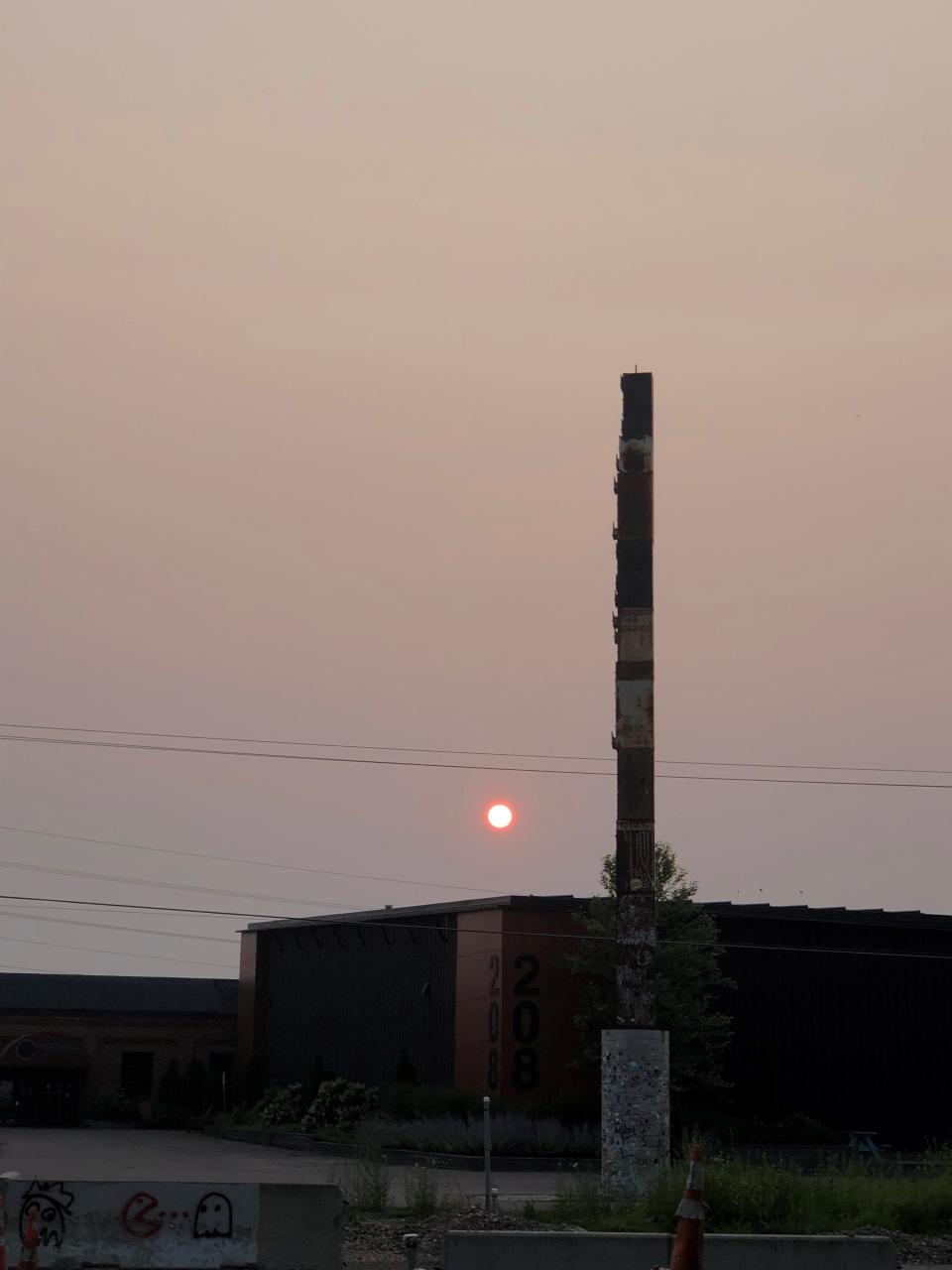How much did it rain in Vermont this summer? Was it on the cool side? Here are the details
This summer seemed pretty freakish in Vermont. It felt like it rained every other day or more – and heavily, as the severe flooding in Montpelier and other parts of the state demonstrated − and that temperatures were on the cooler side.
For most of us, those details are anecdotal. The National Weather Service, however, keeps close tabs on such numbers.
The Burlington Free Press checked in on the last day of August with Conor Lahiff, a meteorologist with the National Weather Service at the Burlington International Airport in South Burlington, to get the rundown of just how weird the weather was for June, July and August. (Those are the months scientists consider meteorological summer, as opposed to astronomical summer, which our calendars tell us ends Sept. 23.)

How rainy was it from June through August?
Montpelier, devastated by downtown flooding from mid-July storms, saw record rainfall this summer, according to Lahiff. Vermont’s capital city endured 22.72 inches of rain the past three months, 10.53 inches above normal. That total surpassed with ease Montpelier’s previous record rainfall of 19.02 inches in 2008.
“You’re talking 3.7 inches above the record,” Lahiff said.
Burlington was wet, too, just not as saturated as Montpelier. Lahiff said Vermont’s largest city had 14.72 inches of rain from June 1-Aug. 31, just under 3 inches above normal. Volunteer weather reporters in towns including Ripton, Hancock and Averill reported totals nearing 33 inches, according to Lahiff.
How rainy was it month-by-month?
June was nothing extraordinary rain-wise. Lahiff said Burlington had 3.93 inches that month, about a third of an inch below normal. Montpelier recorded 4.69 inches in June, not quite half an inch above normal.
Then came July, and the deluge. Montpelier had 12.06 inches of rain for the month, or 7.79 inches above normal. Burlington received 5.89 inches of rain throughout July, 1.83 inches above normal.
Things moderated slightly in August, but remained above average for both cities. Montpelier’s rain total dropped by more than half compared to July, but the final amount of 5.97 inches was still 2.26 inches above normal. Burlington’s 4.9 inches of rain in August registered 1.47 inches above normal, according to Lahiff.

What was the number of days with rain?
Montpelier had 16 days of rain each in June and July and 18 days in August, Lahiff said. Burlington recorded 12 days of rain in June, 15 in July and 17 in August.
For those numbers, Lahiff took off his data-driven hat and put on his anecdotal one. “It feels like it’s been more than it has,” he said.
Were temperatures in Burlington below normal?
It depends on the month. Burlington registered 67.2 degrees Fahrenheit for June, a third of a degree below normal, with two days above 90 degrees. July was warmer, with average temperatures of 74.4 degrees coming in 2 degrees above normal with five days at or above 90. August was “the flip side,” according to Lahiff, with no 90-degree days and an average of 69.1 registering 1.7 degrees below normal.
The average of the three months, according to Lahiff, made for an exactly normal summer average temperature of 70.2. The dog days of August, however, definitely did not arrive this season.
“I think they’re going to come in September this year,” Lahiff said, as temperatures are expected to reach well into the 80s this week.

Did the Canadian wildfires that hazed our sky affect our weather?
“Not really,” according to Lahiff. While large volcanic eruptions have been known to affect weather patterns worldwide, he said the wildfires in Quebec and other Canadian provinces wasn’t as persistent, did not push ash as high up in the atmosphere as a volcano would and the ash was not as thick as volcanic ash.
“Overall it’s a very minor effect on weather patterns,” according to Lahiff. “It’s more that we were just stuck in a persistent pattern.”
The central U.S. has been under a high-pressure “heat dome,” Lahiff said, with temperatures regularly hitting triple digits in Texas. The Northeast, and Vermont in particular, has been trapped in a lower-pressure pattern that created more rain. The heat and drought of the central U.S. will finally head to the Northeast with the warmer temperatures forecast for early September, according to Lahiff.
Contact Brent Hallenbeck at bhallenbeck@freepressmedia.com.
This article originally appeared on Burlington Free Press: Vermont's summer weather brought heavy rain, cool August temperatures

